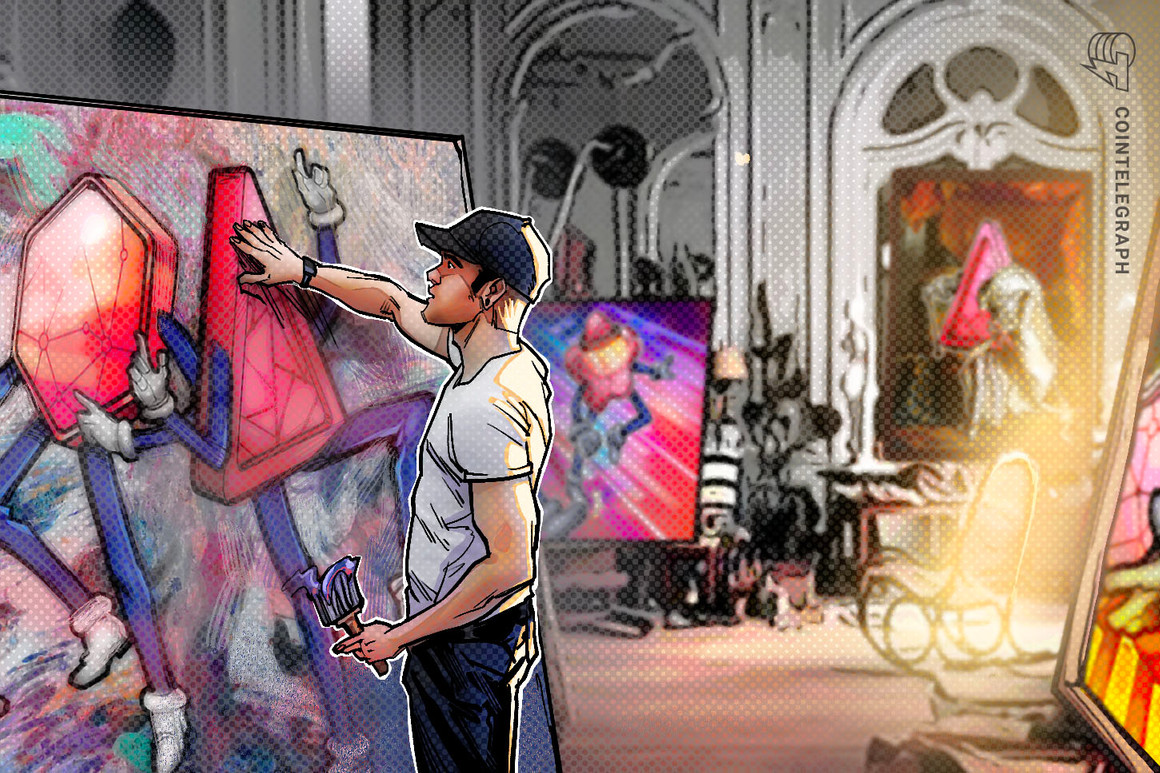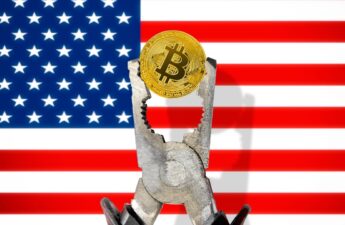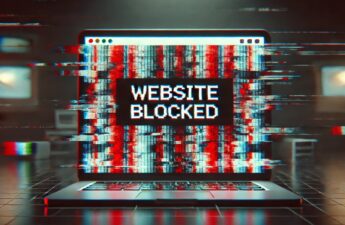There’s been a tremendous amount of hype and misinformation about nonfungible tokens (NFTs) since they appeared on the scene in 2014, particularly since the total market for them passed $24 billion. You can’t open a news feed without an article about nonfungible tokens popping up. These inevitably contain the obligatory “An NFT is a” paragraph for newcomers… and for readers who’ve consumed a dozen similar articles but still don’t get it. If you’re among the latter, you’ve come to the right place.
NFTs really can be important and useful, and they’re evolving to become more so. But NFT evangelists and skeptics alike tend to dumb things down, hype things up and sometimes just get things wrong. Here are a few claims you might have read about NFTs — both pro and con:
NFTs are a scam.You can turn your art into an NFT to prevent it from being copied.NFTs are just a fad.Each NFT is a proof of authenticity for a “one-of-a-kind” item.NFTs are bad for the environment.
First, no — NFTs aren’t a scam. Scammers use email, but we don’t say email is a scam. Second, no — NFTs aren’t a fad, though whether any particular line of digital collectibles turns out to be a lasting set of cultural artifacts or a short-lived fever-dream of techno-social groupthink remains to be seen. Third, while some current blockchains have issues with energy consumption — for the moment — anyone caring about this likely doesn’t know what they’re talking about. And finally, beware of anyone that says you can turn your art into an NFT or that NFTs can prevent your art from being copied, or that they prove a work of art is an authentic “one of a kind.” This language was invented by people who know how to manipulate mass perception, and none of it is true.
Related: Entering NFTs: Understanding the environmental impact of digital collectibles
Are NFTs digital assets? Yes. Because the definition of an asset is “something regarded as having value,” an NFT is a digital asset if people are willing to purchase it. Like the art collector’s decision to buy a Monet painting — or a Maurizio Cattelan “Banana” duct-taped to a wall (for a cool $120,000) — the willingness to purchase something doesn’t need to be based on any sort of objective reality.

Here’s the thing. When an art collector buys a rotting banana duct-taped to a wall, they know it’s a banana duct-taped to a wall. So if you’re going to buy a digital banana virtually duct-taped to a public blockchain by an NFT, it’s best to have a clear-eyed understanding of what you are — and are not — getting for your money.
This is usually the point where you get to read all about nonfungibility. Boil away the jargon, and an NFT is simply a record of something: a claim of ownership, a time-stamped transaction receipt, an agreement. Just as we agree that only the holder of the ticket to Seat 24A of a sporting event gets to sit there, we agree that NFTs aren’t universally interchangeable. And we agree that there are (or should be) no duplicate records that make the same claims about the same thing. That’s all that “nonfungible” is about.
The value of NFTs
What’s important to understand about NFTs is how they become valuable. Unlike a cryptocurrency such as Bitcoin (BTC) or Ether (ETH), an NFT usually gets its value from its claim over something that isn’t controlled by the blockchain itself: a digital picture file, the deed to a house, an entrance pass to an exclusive club. Consequently, the owner of an NFT must grapple with the tenuous relationship between the record of ownership on the blockchain and the thing they supposedly own, which is not on the blockchain.
Consider this: Would you buy an NFT just for itself, a record on the blockchain with just a unique string of data, without any reference to a digital or real-world asset? Not interested? What if we told you it was one-of-a-kind, or that Beyoncé once owned it, or that others are lining up to buy it for more soon?
What do you own when you “own” an NFT? Nearly all legal descriptions of ownership involve the concepts of possession and control over something. If an NFT is used as a ticket to seat 24A, then you possess the agreed-upon right to sit in that seat. Nobody else gets to sit there, and if someone tries, you get to wave your ticket at them and tell them to bugger off.
In the case of an NFT representing a digital work of art, things get tricky. In this case, the NFT typically contains a link to a public media file on the internet, a file that can be accessed and copied by anyone. At least with physical art, it’s hard to make forgeries. But in the world of 1s and 0s, it’s trivial to make perfect replicas. Consequently, the only thing you can possess and control in this case is the transaction receipt itself: Only you can decide to convince someone else to pay you money to write their ID into the owner field of the NFT record. But what is that worth? You don’t have possession or control over the art in many cases. You can’t prevent someone from copying it. You can’t prevent them from doing something that you or the artist wouldn’t like, such as writing a hateful word over the top. And you can’t even prevent them from creating a separate NFT record, pointing it at the same art, and making the same claim of ownership that your NFT makes.
Many digital collectible traders argue that not having possession or control over the actual asset, the work of art, doesn’t matter. They suggest that — and you have to give them points for audacity — this lack of control over people making copies and spreading them all over the internet is a benefit to the NFT owner. Let’s be clear on this. People freely promoting someone’s work might be a benefit, but mass uncontrolled misappropriation, debasement and unauthorized commercial exploitation of other peoples’ intellectual efforts are decidedly not.
NFT evangelists have recently pivoted to focusing on the virtues of community and using NFTs as access passes to all manner of online and in-real-life experiences. This ranges from exclusive clubs to virtual concerts in the metaverse to chat rooms where one can commune with creators, other enthusiasts and famous people. There’s nothing wrong with this. An NFT might be, for the present, a complicated and costly way to manage tickets, but it is a legitimate and potentially useful way to do it, especially as they become cheaper and easier to use. NFTs truly can address problems such as ticket forging and scalping.
Related: NFTs and social capital: How projects are collaborating to the mutual benefit of the entire sector
The evolution of NFTs
NFTs are evolving. With the advent of emerging NFT standards like Ethereum’s new EIP-4910 (a compatible extension to the ERC-721 standard that forms the backbone of most NFTs as of 2022), we can start to make far more powerful claims than have been possible so far, claims that grant possession and control that are enforceable by the NFT’s smart contract itself.

To see how that can work, let’s turn the sporting event ticket example upside down. Instead of you buying an NFT to seat 24A, what if the NFT represented an agreement that only you are able to offer that seat to others, not just for a particular game but for all games over time? So long as sales are only allowed via cryptocurrency transactions, the NFT’s smart contract can give the owner exclusive control over receiving payments in exchange for letting people sit in that seat. And here, the seat owner doesn’t have to be the stadium or the league. The stadium, in this scenario, could franchise each seat and use the NFT’s smart contract to enforce not only that the holders of the NFTs get paid by each person sitting in 24A but that the venue, the league, and potentially even the players get a cut of that revenue. This is the management of licensing rights, a reasonably sensible use case for NFTs.
That’s the point. NFTs can represent and help enforce rights: Artists’ rights. Collectors’ rights. Rights to distribute things, resell them and collect royalties. And if the money trading hands in all this is managed on the same blockchain as the NFT, itself, then this lowly digital transaction receipt and the smart contract that governs it, take on real power and operational efficiency that can change the economics of the arts and entertainment industry, just for starters.
Related: Empowering female creators with NFTs and crypto
Now, techniques such as zero-knowledge cryptography, combined with new smart contracts like the ones based on EIP-4910, are adding scalability, privacy and functionality for developers to build useful services.
Using NFTs in this way lays the foundation for artists to make a living more reliably and consistently by signing up their fans as promoters and distributors, granting them skin in the game…a franchise, if you will. Instead of having to convince people that others will want to buy an NFT for more money later, people can buy the NFT as a right to make authorized reprints and distribute them, which themselves represent a right to reprint and distribute. From ten first-generation digital prints, an artist and their collectors, influencers and promoters can receive passive income on royalties from over 11,000 digital prints and the revenues they collect. Owning such an NFT grants real, enforceable ownership to holders.
New NFT standards are also making it possible to do all this entirely on the blockchain without relying on third-party marketplace exchanges or centralized services. Imagine being able to copy a simple embed code from your NFT into your own gallery website — the way you might with a YouTube video, but without relying on YouTube to serve up the video — and sell it right there (be it a work of art, a concert pass, or a ticket to the big game) without any other platform involved.
In the end, the hyperbole being used to describe NFTs is understandable, and there will be plenty of the same as they evolve. It’s part of the story you’re buying. And these days, whether it’s a new Tesla, a painting of a can of soup, or even a digital banana NFT-taped to the wall of a blockchain, you’re buying a story. So maybe the hype peddlers get one thing right while getting everything else wrong. What a society comes to believe in can be the source of great value. After all, if we managed to convince you that an NFT is just a digital sales receipt recorded on a public internet bulletin board — and not a useful tool for improving the financial lives of creators while growing more inclusive and engaged digital communities — how much would you be willing to pay for one?
This article does not contain investment advice or recommendations. Every investment and trading move involves risk, and readers should conduct their own research when making a decision.
The views, thoughts and opinions expressed here are the author’s alone and do not necessarily reflect or represent the views and opinions of Cointelegraph.
John Wolpert is a co-founder of TreeTrunk.io, a ConsenSys Mesh company. TreeTrunk is the first to implement the EIP-4910 NFT smart contract, distributing royalties on-chain while protecting digital originals under zero-knowledge cryptography. Wolpert also serves as co-chair of the Baseline Protocol standards body, which uses zero-knowledge cryptography and blockchain technology to improve information security in multi-party IT workflows.
Source: https://cointelegraph.com/news/plain-talk-about-nfts-what-they-have-been-and-what-they-are-becoming




